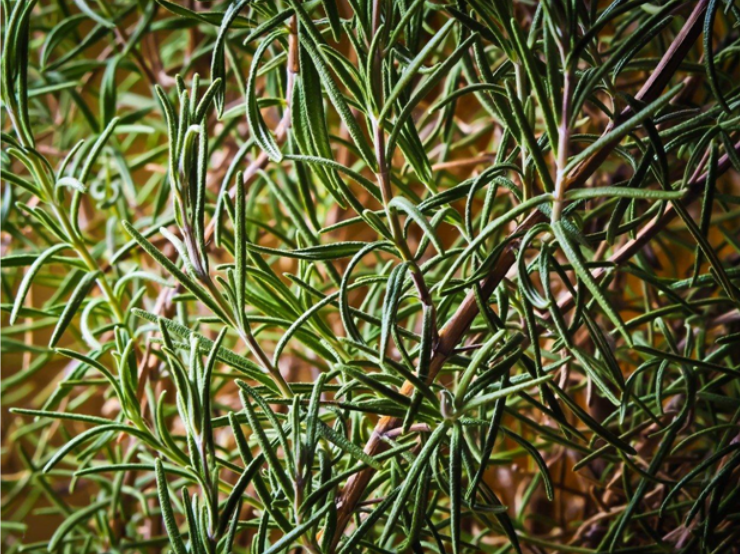Rosemary is one of the most commonly used herbs in savory dishes. If you’re looking to enhance your home cooked meals, there’s no better method than growing herbs yourself. A home garden might seem like a lot of work, but in reality, it can be made of a few materials.

One potted plant is significant enough to grow a decent amount of rosemary. If well maintained, the plant will give you enough output to continually season your dishes. While rosemary is used in cooking, it’s also popular for being an ornamental plant and can be made into rosemary flavored cooking oil.
How to Grow Rosemary
It’s a perennial plant that includes sharp needle-like leaves. Depending on the plant’s environment, it can quickly grow up to 2 m tall. The plant itself thrives best in sunlight but can be placed in colder climates. Due to its drought nature, it can also grow any time of the year but often thrives between spring and autumn seasons.

There are three critical components to ensure that rosemary plants grow well: sun, drainage, and circulation. For sunlight, it grows best when it gets a minimum of six hours of daylight every day. The soil should be well-drained and rich in nutrients. Lastly, water should only be given when the soil is completely dry.
Growing Rosemary Indoors vs. Outdoors
It’s an ideal starting herb because it can quickly grow in various settings. The most popular choices are either indoors or outdoors. In this section, we will tell you if potted or gardened is better.
When growing in a pot, the plant can be placed around the home as long as it has enough sunlight and space to expand. As for planting it outdoors, it must be placed in an area that gets enough sunlight. The herb thrives well and will need to be pruned from time to time. If placed outdoors, you may want to invest in different sprinkler head types.
That being said, when you grow rosemary indoors, know that it is ideal when outdoor climates aren’t adverse or if you’re limited on space. When you grow rosemary outdoors, it tends to grow into larger bushes and provide more herbs. Plus, they look more decorative if trimmed and maintained.
- UN Report Says Small-Scale Organic Farming Only Way To Feed The World(Opens in a new browser tab)
- Strawberries Hate Potatoes: Secrets of Companion Planting + Popular Planting Combinations Part 2(Opens in a new browser tab)
- Hemp Will Save the World: Here’s Why(Opens in a new browser tab)
How to Grow Rosemary from Cuttings
Learning how to cultivate your own rosemary from propagating can help you produce high-quality output.

Numerous gardeners use either cultivars or clones for starting their rosemary plants instead of seeds. But why is this?
When using seeds, there’s a high amount of variation between the quality of rosemary. If you already have high-quality seeds, you can use cuttings to help start a new plant that doesn’t lack in taste or appearance.
Plus, the herbs that are grown from cuttings tend to grow better than others. It may be adaptable to its environment, but it is best when planting cuttings in the fall and winter.
If you’d like to learn how to propagate rosemary through cuttings we can give you a short guide:
- To start, your new plant, cut off 2.5 inches from the original stem.
- After this, snip off the bottom leaves that are facing downward. Please pay close attention that you’re not pulling them off as this will slow down the growth rate of the plant.
- Take the bottom leaves and place them into rooting powder. Take care to submerge it at least one-fourth of an inch.
- To help the cuttings grow, place them in a container with moss and perlite.
- Lastly, take the cuttings and spray them daily with water. Always put the container in direct sunlight, as this will help it grow faster.
Tips For Growing Rosemary
While rosemary may be a very adaptable plant, that doesn’t mean it’s indestructible. Knowing a few tips and tricks to help keep the herb alive is going to be crucial. In this section, we will introduce you to a few nifty tricks that can help save you from killing your rosemary plant.
- 5 Must-Have Tools for Maintaining Your Garden(Opens in a new browser tab)
- How to Clean And Maintain Your Yard With Zero Fossil Fuels(Opens in a new browser tab)
- 3 Summer Maintenance Tips for Your Homestead(Opens in a new browser tab)

1. Be Aware of the Temperature
Depending on if you’ve planted your herb indoors or outdoors, the temperature may vary. Rosemary itself hails from the Mediterranean area and is accustomed to being in dry soil with high temperatures. The more you can mimic this environment, the better they will thrive.
2. Use The Correct Potting & Soil
A nifty trick that can help prevent your rosemary plant from dying is to choose the right potting size. This means selecting a pot that is the exact height of your rosemary plant. The width should have at least one inch of space around all sides of the pot. This will help prevent overcrowding and allow the plant to grow naturally.
3. Create Drainage
Rosemary plants tend to absorb more of their water from the foliage rather than the roots. That’s why it’s essential to create a dry environment. This is mainly due to their natural habitat being dry soil. Using gravel or small pebbles at the bottom of the pot may also help the plant thrive.
4. Allow Enough Sunlight
Rosemary comes from a very bright climate and needs sunlight to maintain its quality. Placing potted rosemary in windows or planting in a well-lit area can prevent it from withering over time. Rosemary impacts your garden by growing rapidly if allowed adequate sunlight.
5. Provide Enough Water
Unlike other plants, rosemary doesn’t need to be watered every day. Most gardeners recommend that you water the plant every three days. Water should be placed into the soil if it begins to look a bit too dry. However, since rosemary absorbs most water through its foliage, it should be watered by using a spray bottle and misting the top.
The Bottom Line
Growing rosemary doesn’t have to be complicated if you know exactly what to do. The plant grows well year-round and can put up with most weather. This makes it ideal for growing anywhere as long as you provide it the right care and nutrients.
We hope that we’ve at least helped you a bit with learning how to grow rosemary. If you feel like we’ve missed anything, feel free to share your tips and lifehacks down below.
More from the Homestead Guru:
- Tiny Edible Urban Gardens on Roofs, in the Air, and Underwater!(Opens in a new browser tab)
- Butterfly Pea Tea: How to Grow the Magic Color Changing Tea!(Opens in a new browser tab)
- How to Eat Acorns: The Absolute Easiest Way(Opens in a new browser tab)
- The End of Toxic Agriculture – How Prairie Land & Animal Farming Can Save the Environment(Opens in a new browser tab)
Our Author
Anthony Hibbs was born in Spain and has lived in California since 10. As a biology professor, one of his main hobbies is gardening, and he’s been blogging about the plants he grows since 2011. Currently living in San Diego with his wife Beatrice.




